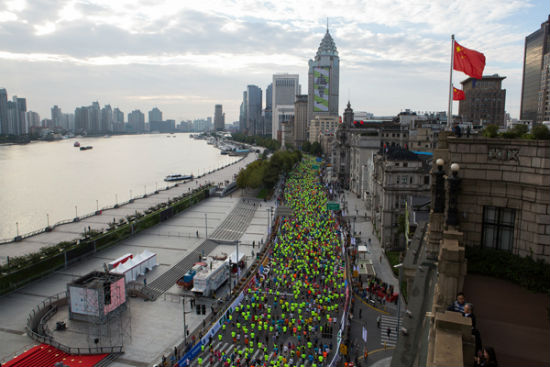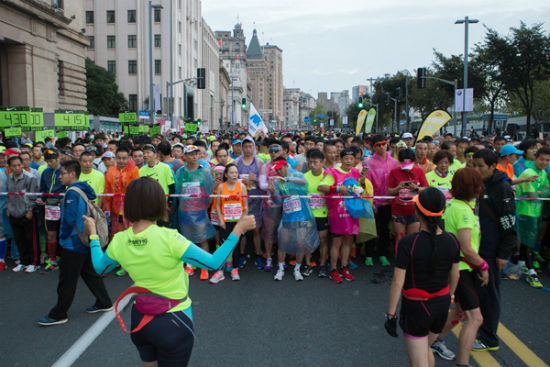Marathon Running: China's Rising Middle-Class Trend
BY Li Zongyang Popular amongst middle class professionals and businessmen that live in the big cities, it has become a lifestyle choice. Having achieved a certain level of economic power, these ambitious go-getters are looking for something more to test their limits. Catherine Sun, an intellectual property lawyer believes that "in the past three to four years, running has become a religion for the Chinese middle class." She is the first female Chinese runner to complete seven marathons on seven continents, reports Financial Times.

The Bund, Shanghai International Marathon, held on October 30th, 2016. Photo credit: Zhu Weihui
The marathon running market is estimated to be worth over 300 billion RMB and has drawn the attention of local government, private firms, sport equipment and healthy food industries. The biggest event in China this year was the Shanghai International Marathon with 38,000 running aficionado's from 85 countries across the world participating. Well-known brands, Nike and Mercedes Benz sponsored the international event to target runners with a sizeable disposable income.
China has held 294 marathons and similar events to date. A change in Chinese Athletic Association's administrative approval procedures for marathon events has given a remarkable boost to the popularization of the sport. Beijing and Shanghai are now the two Chinese cities with the biggest marathon runner populations. In Shanghai, there are over 200 thousand regular runners, most of whom seek for better and more professional running experience.

Shanghai International Marathon 2016, the Bund.
The recent bloom of consumer groups in China also contributes to the flourishing market of the running industry. According to a report from Nielsen Holdings PCL, the annual average spending on running for each professional runner is 4594 RMB, and 2333 RMB for amateur runners, these consumers are driving the industry. Running equipment, smart devices, and marathon entrance fees are the key items of expenditure for the average runner.
Marathon events exert positive effects on promoting the host city, projecting a healthy, energetic city image, heightening citizens' interest in sports and stimulating consumption and economic growth. The branding and marketing of the Shanghai International Marathon has successfully turned it into one of the most influential brands of the city.

Shanghai International Marathon 2016, the Bund.
Earlier this year the State Council of China set a goal for the sports industry to occupy a market of over 5 trillion RMB. As the market leader, marathon running expects a significant profitable potential in the next few years. Despite the noticeable increase of the running population, experts speculate that the domestic running market is still at its initial stage, as the market has not been prepared with more advanced equipment, specialisation and sufficient professional knowledge. Derivative industries such as running tours and themed running races are far from mature.
"We realised the huge marketing potential of the running industry," Lv Hui, manager of World Expo Sports says. Marketers are exploring new ways to target runners with social media apps and smart technologies., Adidas, the sponsor for Beijing International Marathon first utilised live-streaming to interact with young consumers.
- Under Debate: The Rise of Classics Reciting Private Schools in China
- Publish Your Own Book with Chinese Social Media App, WeChat
- “China Was the Best Experience of My Life” – A Year of German-Chinese School and Youth Exchange
- Developing Eco-industry to Curb Desertification
- Haixi: Industrial Upgrading through Development of a Circular Economy
